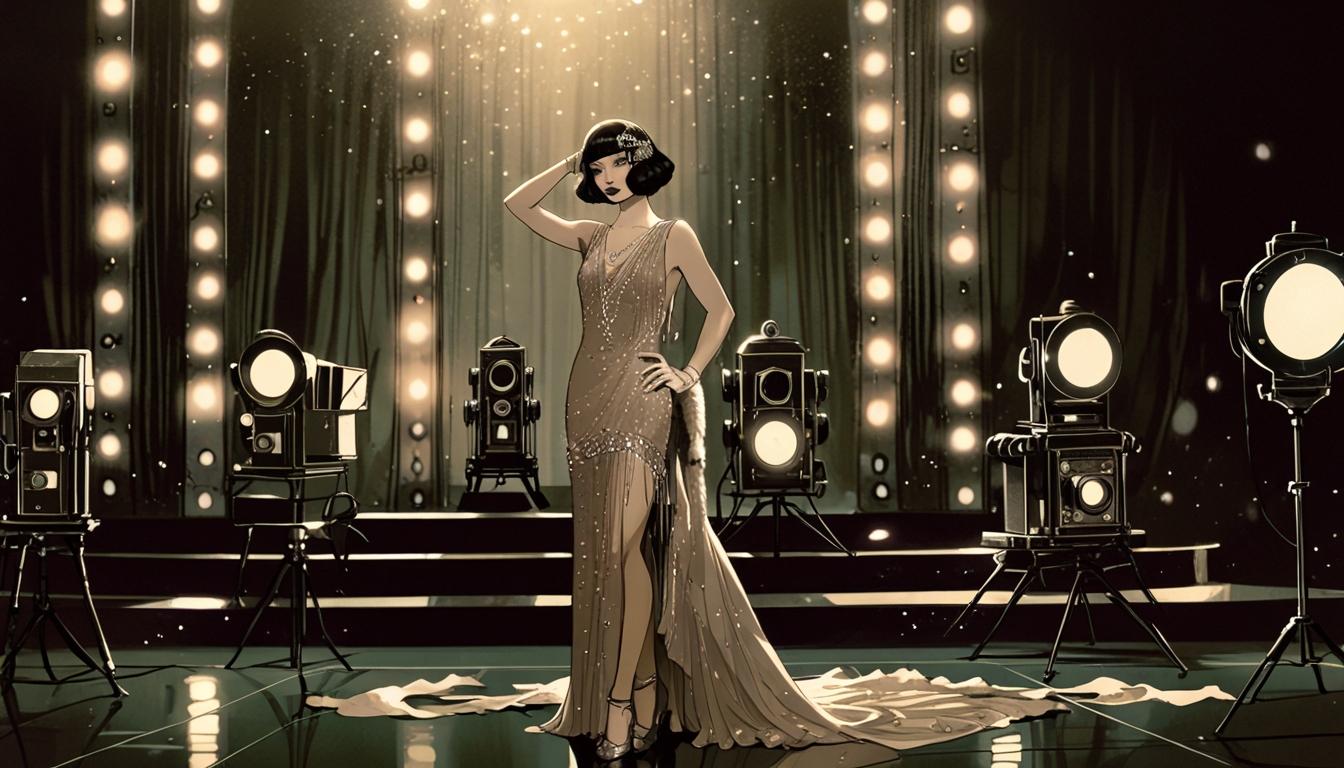Stephen Michael Shearer’s new biography dives deep into the glamorous yet tumultuous career of Gloria Swanson, a pioneering figure of the silent film era.
In his newly released biography, “Gloria Swanson: Hollywood’s First Glamour Queen,” Stephen Michael Shearer explores the life and legacy of one of the most iconic figures of the silent film era. The book, which is a lavish illustrated tribute weighing over four pounds, delves into the multifaceted career of Gloria Swanson, who emerged as a leading star during the 1920s at Paramount Pictures.
Shearer opens the biography stating, “Gloria Swanson was a great motion picture star. Her pictures for Paramount in the 1920s made millions, and her public and social life reflected all the glamour and mystique that so mesmerized and fascinated the average American moviegoer.” Swanson’s determination to embody the essence of a star is evident in her assertion, “I have decided that when I become a star, I will be every inch and every moment a star. Everybody from the studio gateman to the highest executive will know it.” This ambition defined her approach to stardom and set a high bar for herself and others in Hollywood.
Swanson’s trajectory in the motion picture industry has often been cited as a reflection of the evolving nature of stardom. While she maintained that the star held the ultimate power in Hollywood, insiders often disagreed, leading to the adage from columnist Sidney Skolsky, “Nobody knew more about a Marilyn Monroe movie than Marilyn Monroe.” This juxtaposition illustrates Swanson’s complex relationship with the studio system and her quest for creative control.
The biography chronicles moments of glamour and challenge in Swanson’s career, particularly during the transition from silent films to talkies. In the 1950 film “Sunset Boulevard,” Swanson famously portrayed Norma Desmond, a character lamenting the decline of Hollywood’s golden age with the line, “It’s the pictures that got small.” This sentiment underscores not just her character’s self-absorption but also highlights a broader cultural shift away from the grandeur that Swanson represented.
Though her transition into the sound era did not catapult her with the same success as her silent films, Swanson found ways to stay relevant. Despite early challenges—the critical reception of her initial talkies often focused on her stunning wardrobe rather than her performances—she continued her pursuit of stardom. Shearer notes that critics of Swanson’s film “The Trespasser” remarked she was “the best talker seen yet,” indicating that her early efforts in sound were not entirely without merit.
On the topic of her later years in entertainment, Shearer reflects on Swanson’s ability to reinvent herself, participating in various media formats, including Broadway and television, though with limited impact. Nevertheless, she carved out notable moments through guest appearances, receiving acclaim for her playful performances on shows like “The Beverly Hillbillies” and “The Carol Burnett Show.”
Shearer crafts a narrative that remains engaging and visually stimulating, filled with photographs that capture the glamorous essence of Swanson’s stardom. With meticulous attention to detail, the biography not only chronicles her professional highs and lows but also highlights her vibrant personal life, featuring shots of Swanson with family and friends.
The concluding sentiments of the book echo the reverence held for Swanson’s legacy, encapsulated in the words of her “Sunset Boulevard” character’s devoted servant, Max von Mayerling, who proclaims, “Madame was the greatest star of all.” This tribute encapsulates the enduring impact of Gloria Swanson, a pioneering figure who defined and navigated the complexities of Hollywood stardom.
Source: Noah Wire Services




